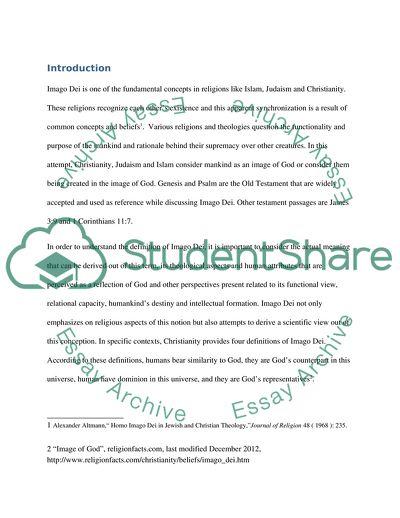Cite this document
(Functional Understanding of the Imago Dei Literature review Example | Topics and Well Written Essays - 1750 words - 1, n.d.)
Functional Understanding of the Imago Dei Literature review Example | Topics and Well Written Essays - 1750 words - 1. https://studentshare.org/religion-and-theology/1791333-imago-dei
Functional Understanding of the Imago Dei Literature review Example | Topics and Well Written Essays - 1750 words - 1. https://studentshare.org/religion-and-theology/1791333-imago-dei
(Functional Understanding of the Imago Dei Literature Review Example | Topics and Well Written Essays - 1750 Words - 1)
Functional Understanding of the Imago Dei Literature Review Example | Topics and Well Written Essays - 1750 Words - 1. https://studentshare.org/religion-and-theology/1791333-imago-dei.
Functional Understanding of the Imago Dei Literature Review Example | Topics and Well Written Essays - 1750 Words - 1. https://studentshare.org/religion-and-theology/1791333-imago-dei.
“Functional Understanding of the Imago Dei Literature Review Example | Topics and Well Written Essays - 1750 Words - 1”. https://studentshare.org/religion-and-theology/1791333-imago-dei.


